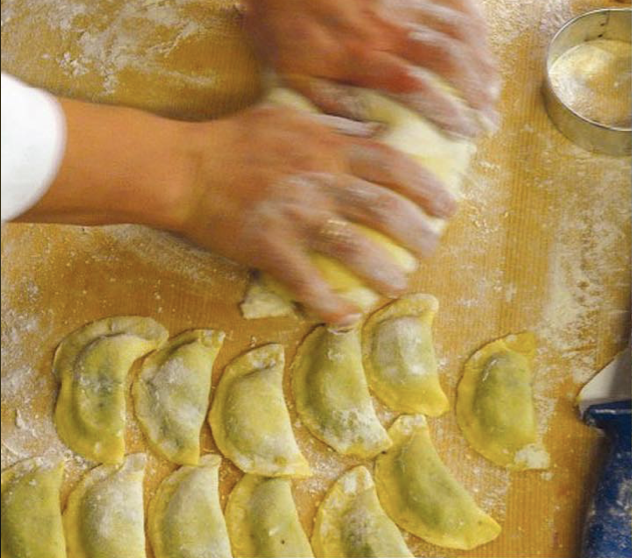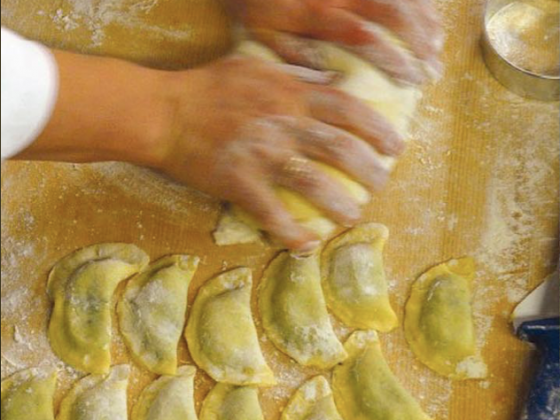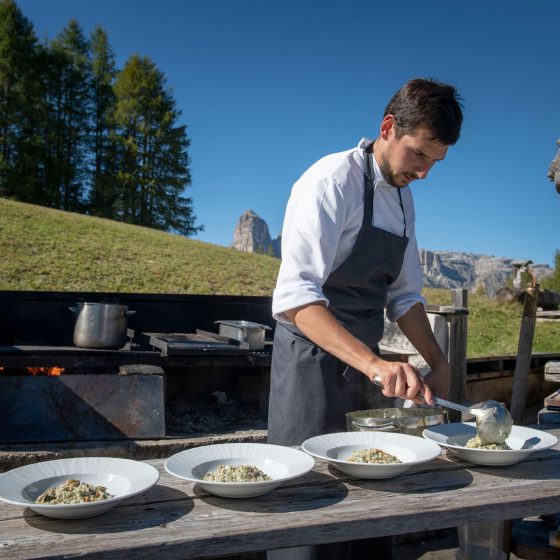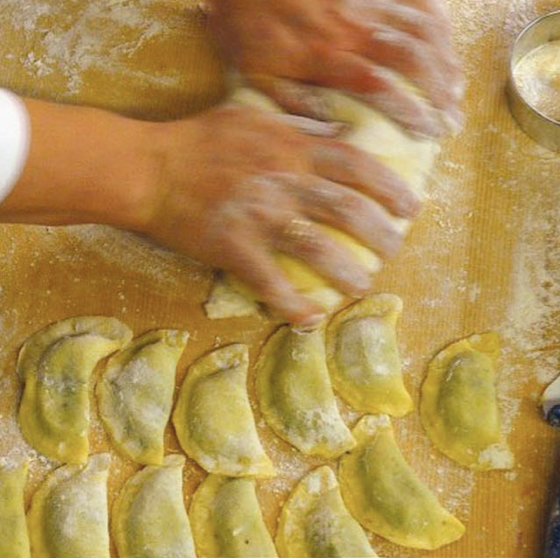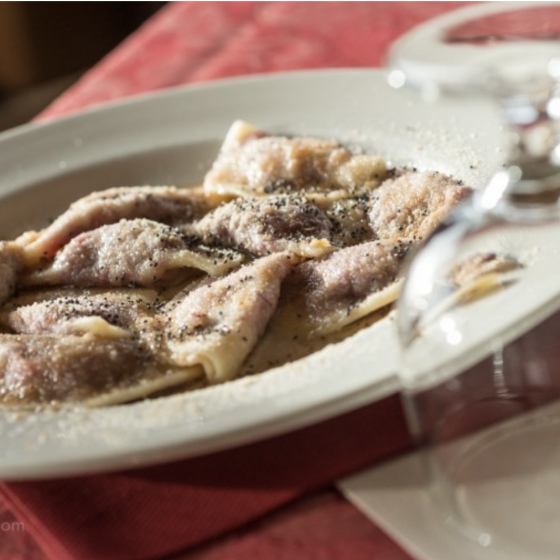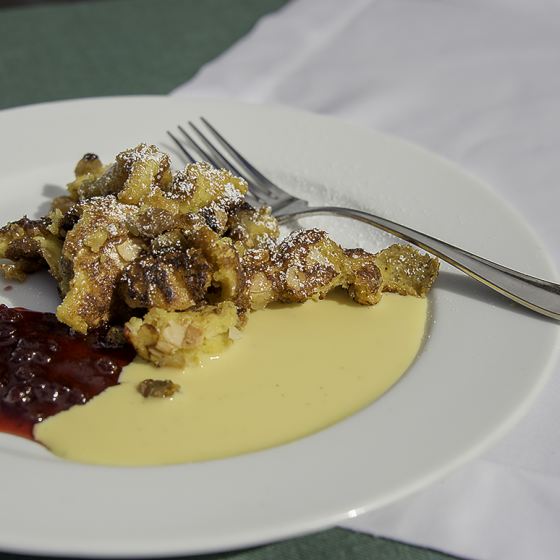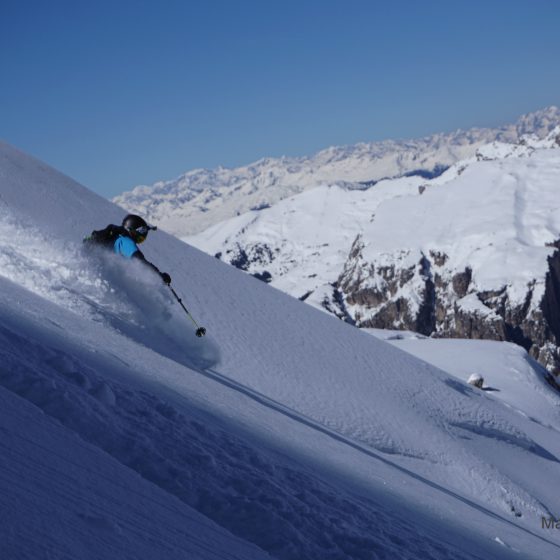Schlutzkrapfen – South Tyrolean Ravioli Filled with Spinach and Ricotta
Schlutzkrapfen, or Ravioli Tirolesi, is a regional pasta specialty from the Tyrol – an historic region in the Alps that occupies part of northern Italy and western Austria – that resembles Italian ravioli. In the Ladin valleys of the Dolomites, it is called Casunziei (half moons) in the native Ladin language. In Italian, it is called Mezzelune. The German name is derived from the word schlu(t)zen, which means something like “to slide” – referring to the pasta, coated with butter, sliding into your mouth, with the filling melting onto your tongue!
In the South Tyrol / Alto Adige, Schlutzkrapfen, or Schlutzer for short (regionally also called Schlickkrapfen, Schlierkrapfen, or Schlipfkrapfen), are made with a combination of rye and wheat flour, and filled with spinach and curd cheese. Served as a starter, a first course, or second/main course, this rich and tasty pasta is perfect for a lunch or a dinner, and incredibly satisfying after a hike, climb, or ski!
Preparation Time
1-1.5 hours
Yields
4 servings
Ingredients
For the pasta:
1-1/4 cups (150 grams / 5.4 ounces) of rye flour
4/5 cup (100 grams / 3.6 ounces) wheat flour
1 egg
50-60 milliliters (~60 ounces) lukewarm water
1 tablespoon olive oil
Pinch of salt
For the filling:
150 grams (5.4 ounces) spinach, boiled (~300 grams / 11 ounces of fresh spinach)
50 grams (1.8 ounces) onion
1/2 clove garlic
1 tablespoon (14.2 grams / 1/2 ounce) butter
100 grams curd cheese (also known as cottage cheese or quark)
1 tablespoon parmesan, grated
1 tablespoon chives, finely chopped
1 pinch of nutmeg
Ground pepper
Salt
For serving:
60 grams (~2 oz / 4 tablespoons) butter, browned
Parmesan cheese, grated
Chives, coarsely chopped
Preparation
Begin by making the pasta dough. Combine the two flours on a pastry board, forming a ring shape with a “well” or “bowl” in the center of the flour. Whisk the egg with the lukewarm water and the oil. Pour the mixture into the middle of the flour ring, and add the salt. Knead into a smooth dough, working from the inside to the outside. Cover the dough and let it rest for at least 30 minutes. This allows the gluten in the dough to “relax,” which makes it easier to roll. Just as importantly, it lets the dough ferment and develop flavor!
While the dough rests, make the filling. Thoroughly drain the spinach, squeezing the water out of it if necessary, and finely chop. (If you are using fresh spinach, place the spinach in a hot pan and wilt it with a pinch of salt. Once it is cool enough to handle, squeeze out excess liquid, and then finely chop.) Sautee onions in butter over low to medium heat, until softened and translucent. Add the garlic, turning up the heat slightly, and cook until fragrant (~1 minute). Add the spinach and stir to combine. If there is any leftover moisture from the spinach, cook briefly until excess liquid has evaporated. Lower heat and allow mixture to cool slightly. Add the curd cheese, parmesan, and chives. Season with nutmeg, salt, and pepper to taste, and mix well.
Once the dough has rested, roll the pasta out into a thin sheet, (~1.5mm / 1/16″ thick). If you are using a pasta machine, this is usually the second-to-last setting. Cut out 7 to8-centimeter (2-3/4 to 3-1/8”) diameter circles of dough using a smooth, round biscuit or cookie cutter. Work the dough as quickly as possible so it does not dry out!
Spoon one teaspoon of the filling (about the size of a walnut) onto the center of each circle. Fold the filled dough circles in half, and close by pressing the edges together well. Moisten the edges with a little egg or water for a better seal. You can also crimp the edges with a fork if necessary. To finish, trim the edges with a notched wheel if desired.
When ready you are ready to cook the Schlutzkrapfen, melt the butter in large sauté pan over medium heat.
Bring well-salted water to a roiling boil, and add the Schlutzkrapfen. When they float to the top (~3-5 minutes), drain them. Add the Schlutzkrapfen to the buttery pan and cook for a few minutes until the butter is golden brown, but not burnt (it should smell and taste somewhat nutty).
Sprinkle with chives and grated Parmesan or Grana Padano cheese and serve.
This recipe was adapted from several sources including the Holiday House Merano, Great Italian Chefs, and South Tyrol Information.

